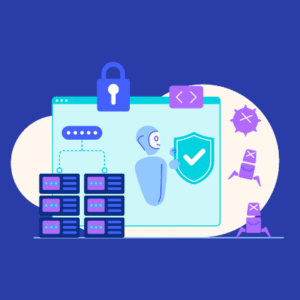It’s not particularly astonishing considering the expanding attack surface brought about by the digital transformation and the remote workforce, which has led to the emergence of advanced cyber-attacks.
A Zero Trust Architecture (ZTA), especially in the context of cyber security services Chicago, employs your resources more intelligently, enhancing your cybersecurity stance and providing improved data protection. This allows you to focus on your business.
What is Zero Trust Architecture?
ZTA is a security framework that operates under the fundamental principle of “Never Trust, Always Verify.” In a traditional security model, once a user or device gains access to the network, they are often trusted implicitly.
However, ZTA assumes that threats can originate both from external and internal sources, and trust should be continuously validated, irrespective of a user’s location or network entry point.
Zero Trust Implementation: Practical Steps
Asset Inventory: Begin by identifying and classifying all assets within your organization, encompassing devices, applications, and data.
Multi-Factor Authentication (MFA): Impose MFA to guarantee that user identities undergo verification through multiple methods prior to granting access.
Role-Based Access Control (RBAC): Allocate access privileges based on distinct roles and duties, ensuring users solely possess access to essential resources for their assignments.
Encryption: Safeguard data both during transmission and while at rest to shield it from unauthorized access, even if it comes into the possession of unauthorized individuals.
Network Segmentation: Deploy micro-segmentation to segregate various sections of your network and restrict lateral movement by potential intruders.
Core Elements of Zero Trust Architecture
In the realm of zero trust, numerous trends abound within the market. Most of these trends zero in on specific solutions that bolster a single architectural component or feature of zero trust. Many corporations perceive the initiation of zero trust as commencing with Identity.
This is primarily because Identity and Access Management (IAM) vendors have attained a high level of maturity and have enthusiastically embraced Zero Trust Architecture (ZTA) principles. Such as Multi-Factor Authentication (MFA) and Conditional Access, actively promoting these aspects.
While IAM undoubtedly holds a pivotal role as a critical component and the primary entry point, Protiviti adopts a comprehensive perspective of zero trust.
From our standpoint, zero trust represents a holistic strategy and program, comprising seven distinct design elements. This perspective empowers organizations to capitalize on their existing strengths in the adoption of zero-trust principles.
The foundational elements at the core of zero trust architecture encompass:
Identity and Access
Each identity must undergo rigorous verification and fortification through robust authentication practices.
This includes multi-factor authentication, adaptive and conditional access, as well as role-based access controls. These measures serve to validate the identity across the entirety of the digital estate.
Data Governance
Effective data management involves categorizing and labeling data to ensure the discoverability of both structured and unstructured data.
Organizations should implement differentiated data protection measures that are tailored to the value of the data, avoiding a one-size-fits-all approach.
Networks

Networks remain central control points for the majority of organizations. The deployment of micro-segmentation and micro-perimeters is crucial to restrict lateral movement within the environment and establish control points that facilitate visibility into data flows.
Endpoints
Identifying, cataloging, isolating, and securing endpoints on a network is paramount. Similar to identities, endpoints should undergo authentication during the authentication process to guarantee access from approved and secure systems.
Applications
Applications and application programming interfaces (APIs) serve as the conduit through which users access data. It is imperative to implement safeguards that unearth shadow IT and enable real-time analytics and monitoring for all applications, whether they are homegrown or third-party.
By comprehensively addressing these design elements, organizations can construct a robust foundation for their zero-trust journey.
What Should Companies Do?
Embrace a zero-trust strategy — To achieve success, a commitment to the zero-trust approach must come from the highest levels of leadership across various business units.

Evaluate the existing project roadmap — Organizations ought to pinpoint and comprehend the current and upcoming security projects in the pipeline. This enables the potential alignment of these projects with zero-trust principles.
Identify and chart data — It’s vital to identify sensitive data and develop a thorough comprehension of where it is stored, processed, and transmitted. Moreover, the pathways of sensitive enterprise data should be mapped out to effectively delineate the boundaries of zero-trust core elements (e.g., workloads, data, etc.).
Create or revise security policies and standards — Security policies and standards should be adapted to accommodate changes made to enterprise resources in line with zero-trust principles.
Architect the future network — Organizations should design micro-segmentation by logically crafting network segments that govern traffic both within and between these segments. This methodology serves to limit the lateral spread of threats and emphasizes the development of detailed policies based on a data-centric approach.
Digital Transformation and Zero Trust
While the COVID-19 pandemic undeniably hastened the “bring your device” (BYOD) and remote workforce trends. The Internet of Things (IoT) gadgets. Cloud-based applications and other cloud services also play a role in undermining security that relies on perimeters.
For instance, an individual utilizes their tablet to link up with a cloud application. Might find themselves hundreds of miles away from the company’s central data hub. Necessitating the safeguarding of corporate data across a multitude of systems.
Ideally, Zero Trust Architecture (ZTA) aims to dismantle these barriers by leveraging identity. Contextual information, and device data, are all subject to continuous validation and monitoring. ZTA’s objective is to exclusively grant data access to users and devices that have been duly authenticated and authorized.
WPBN is curated news aggregator website focusing on trending and hot news from the WordPress community.






